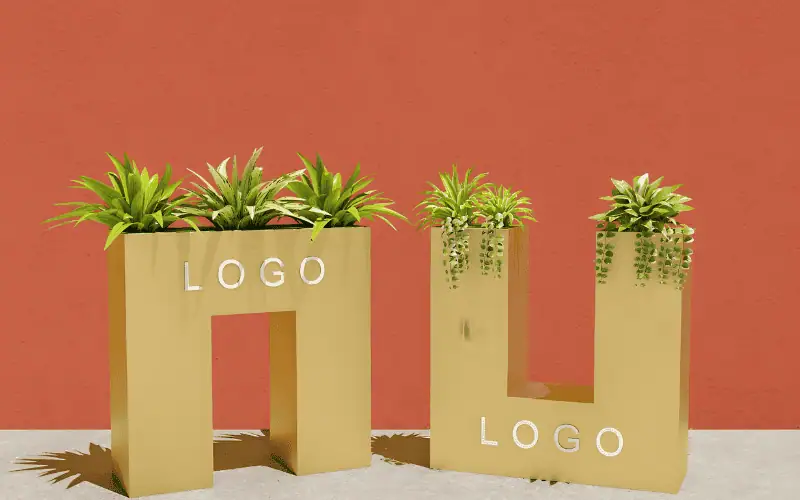Contents
How To Make A Raised Garden Bed With Galvanized Steel?
- John

Building an elevated planting bed is an effective and widely used method for cultivating plants, providing enhanced soil management, superior drainage, and more convenient upkeep. While raised garden beds can be made from various materials like wood, bricks, or concrete blocks, galvanized steel has gained attention as a durable and modern alternative.
This article will walk you through the detailed process of constructing a raised garden bed with galvanized steel. We’ll also explore the advantages of choosing galvanized steel over other materials.
Preparation Before DIY Galvanized Raised Garden Bed
Choose the Right Location
When choosing a spot for your raised garden bed, focus on a location that gets 6–8 hours of direct sunlight each day. Sufficient light is crucial for most plants to thrive. Ensure the ground is level, as uneven surfaces can cause water to pool or soil to shift, negatively impacting plant development.
If the chosen area has large roots or debris, use a shovel or root cutter to clear it thoroughly. This will provide a clean and stable foundation for your garden bed. For those planning to use irrigation, confirm that the location is within reach of your existing water supply. If not, consider connecting an additional irrigation system, such as a drip line, to ensure efficient and consistent watering.
Design and Measure the Bed
Typical sizes for raised beds are 3–4 feet in width (allowing convenient reach from either side) and 6–8 feet in length. These measurements, however, can be modified to suit your space and gardening needs.
Width
Limit the width to a maximum of 4 feet so you can reach the center of the bed without stepping inside, which could compact the soil. For smaller spaces, 3 feet may be ideal.
Length
Choose a length that fits your garden layout. Standard lengths are 6–8 feet, but longer beds may require additional cross supports to prevent bulging.
Height
This depth depends on your plant selection.
- Shallow-rooted plants like lettuce, herbs, or strawberries need a minimum of 12 inches.
- Medium-rooted plants like carrots, beans, or peppers require at least 18–24 inches.
For mixed planting, opt for a depth of at least 18 inches to accommodate most root systems. Consider your physical needs as well—taller beds reduce bending and are more accessible, making them a good choice for those with mobility concerns.
By customizing the size of your elevated garden bed to suit your unique plants and individual requirements, you can establish a practical and productive growing area.
Prepare Necessary Materials And Tools
Below is a detailed table outlining all the materials and tools needed to build a galvanized raised garden bed. This organized list ensures you have everything ready before starting your project.
Structural
| Galvanized Steel Sheets | 2–3 mm thick sheets for durability and resistance to rust. |
| Corner Brackets | Metal brackets to secure corners and provide stability. |
| Screws, Bolts, and Washers | Galvanized or stainless steel fasteners to prevent rust. |
| Cross Supports (Optional) | For beds longer than 6 feet to prevent bulging. |
Tools
| Metal Shears or Tin Snips | For cutting galvanized steel sheets to size. |
| Measuring Tape and Marker | To measure and mark precise dimensions. |
| Sandpaper or Metal File | To smooth sharp edges of cut steel for safety. |
| Shovel and Rake | For clearing and leveling the ground. |
| Gloves and Safety Goggles | Protect hands from sharp edges and eyes from flying debris. |
Soil
A combination of garden soil, compost, and topsoil is ideal for most plants. Use approximately 60% garden soil, 30% compost, and 10% topsoil for a nutrient-rich and well-balanced mix. Alternatively, you can purchase pre-mixed, ready-to-use soil from garden centers to save time and effort, especially if you’re new to gardening or need a quick setup.
If you are gardening in a location prone to water retention, consider adding a drainage layer at the bottom of the bed like gravel or coarse organic material.
Optional Additions
Enhance your raised garden bed with practical upgrades. Belowing additions are optional but can greatly improve the functionality and ease of maintenance.
- A drip watering setup guarantees effective hydration by supplying water straight to the plant roots.
- Mulch helps retain water, suppress weeds, and regulate soil temperature.
- For safety, edge protectors cover sharp steel edges, preventing injuries and improving aesthetics.
DIY Galvanized Raised Garden Bed
Cutting the Galvanized Steel Sheets
Measure and mark the steel sheets according to your design, ensuring accuracy. Use metal shears to cut along the lines, then smooth sharp edges with sandpaper or a metal file for safety. Precise cutting and finishing are essential for a secure and professional assembly.
Assemble the Frame
Begin by arranging the galvanized steel sheets into your desired rectangular or square shape directly at the selected location. Ensure the edges of the sheets align properly to create a clean and stable structure.
Secure the Corners
When linking galvanized steel sheets to form the corners of your raised garden bed, you have several effective options depending on the tools and materials available:
- Use corner brackets (metal or heavy-duty plastic) to reinforce the joints, ensuring stability.
- Use wooden corner posts. Place these inside each corner and fasten the steel sheets to them using screws or bolts.
- Use angle irons or pre-drilled corner connectors are also excellent choices for providing additional strength.
Fasten the Sides
Drill pilot holes along the edges of the steel sheets to attach screws or bolts. This minimizes damage to the material and ensures a tighter fit. Use rust-proof fasteners to maintain durability.
Add Midway Supports for Long Sides
If the bed is longer than 6 feet, install midway supports along the longer sides. These can be:
- Wooden stakes: Driven into the ground and attached to the steel with screws.
- Cross braces: Horizontal supports connecting the opposite sides to prevent bulging.
Fill the Bed with Soil
Start by layering the soil properly. At the bottom, add a drainage layer of twigs, small branches, or dry leaves to improve drainage. Next, add a middle layer of partially decomposed compost or straw to enrich the soil over time. Finally, top the bed with a mix of garden soil, compost, and topsoil in equal parts to provide nutrients and structure for plant growth.
Lightly water each layer as you fill the bed to help settle the materials and remove air pockets. The soil should feel damp but not oversaturated. Use a rake to level the surface, slightly mounding it above the edges to account for settling.
With your raised garden bed prepared and planted, you’re ready to design and nurture your very own garden oasis. This is the perfect opportunity to get creative and make your small garden a reflection of your personality and gardening goals!
Why Choose Galvanized Steel for a Raised Garden Bed?
Galvanized steel is an ideal material for raised garden beds due to its durability, safety, and low maintenance. Its zinc coating resists rust, corrosion, and weather damage, ensuring a long lifespan without rotting or warping.
Unlike treated wood, it is non-toxic and safe for growing vegetables, while its strength easily supports heavy soil without bowing. Environmentally friendly and recyclable, galvanized steel also helps regulate soil temperature, keeping plants healthy in varying weather conditions.
Perfect Galvanized Steel For Garden
Upgrade your garden with Steel Pro Group’s premium galvanized steel. Built for durability, sustainability, and style, our steel sheets are perfect for raised garden beds that last a lifetime. Choose Steel Pro Group for quality you can trust and results that grow with you!
















